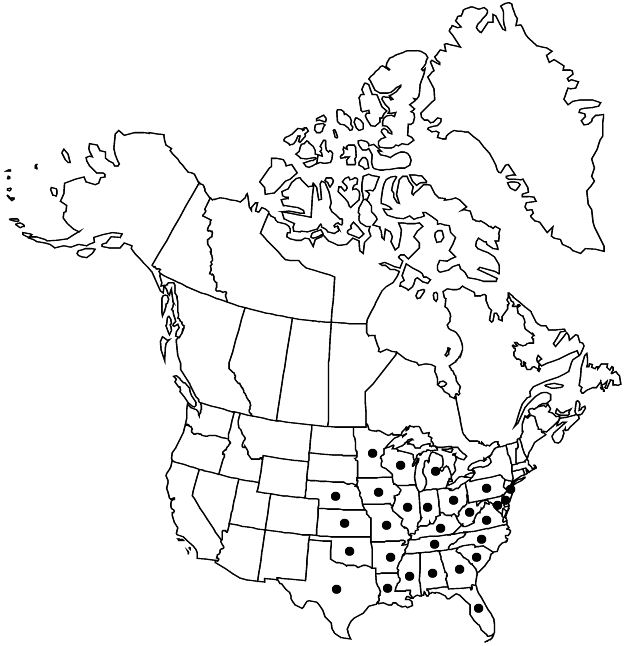Croton glandulosus var. septentrionalis
Prodr. 15(2): 686. 1866.
WeedyEndemic
Synonyms: Croton glandulosus var. angustifolius Müller Arg. C. glandulosus var. crenatifolius A. M. Ferguson C. glandulosus var. shortii A. M. Ferguson C. glandulosus var. simpsonii A. M. Ferguson
Revision as of 14:49, 18 September 2019 by FNA>Volume Importer
Plants 2–12 dm. Stems moderately stellate-hairy, hairs appressed, radii equal. Leaves: petiole apical glands sessile, wavy-wrinkled when dry, 0.5–0.8 mm diam.; blade 2–7 × 0.7–3 cm, length mostly more than 2 times width, membranous, marginal teeth pointed, both surfaces moderately stellate-hairy; base 3-veined.
Phenology: Flowering May–Nov.
Habitat: Sand dunes, old fields, roadsides, waste places, cultivated land.
Elevation: 0–900 m.
Distribution

Ala., Ark., Del., Fla., Ga., Ill., Ind., Iowa, Kans., Ky., La., Md., Mich., Minn., Miss., Mo., Nebr., N.J., N.C., Ohio, Okla., Pa., S.C., Tenn., Tex., Va., W.Va., Wis.
Discussion
Variety septentrionalis is by far the most widespread variety of Croton glandulosus in North America, and the only one present north of Florida in the east and north of Oklahoma and Kansas in the Midwest.
Selected References
None.
Lower Taxa
None.